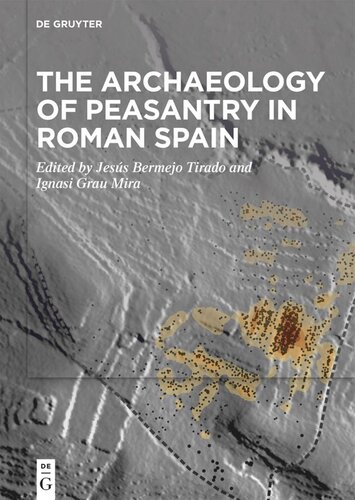

Most ebook files are in PDF format, so you can easily read them using various software such as Foxit Reader or directly on the Google Chrome browser.
Some ebook files are released by publishers in other formats such as .awz, .mobi, .epub, .fb2, etc. You may need to install specific software to read these formats on mobile/PC, such as Calibre.
Please read the tutorial at this link: https://ebookbell.com/faq
We offer FREE conversion to the popular formats you request; however, this may take some time. Therefore, right after payment, please email us, and we will try to provide the service as quickly as possible.
For some exceptional file formats or broken links (if any), please refrain from opening any disputes. Instead, email us first, and we will try to assist within a maximum of 6 hours.
EbookBell Team

4.0
16 reviewsThis volume aims to present an updated portrait of the Roman countryside in Roman Spain by the comparison of different theoretical orientations and methodological strategies including the discussion of textual and iconographic sources and the analysis of the faunal remains. The archaeology of rural areas of the Roman world has traditionally been focused on the study of villae, both as an architectural model of Roman otium and as the central core of an economic system based on the extensive agricultural exploitation of latifundia. The assimilation of most rural settlements in provincial areas of the Roman Empire with the villa model implies the acceptance of specific ideas, such as the generalization of the slave mode of production, the rupture of the productive capacity of Late Iron Age communities, or the reduction in importance of free peasant labor in the Roman economy of most rural areas. However, in recent decades, as a consequence of the generalized extension of preventive or emergency archaeology and survey projects in most areas of the ancient territories of the Roman Empire, this traditional conception of the Roman countryside articulated around monumental villae is undergoing a thorough revision. New research projects are changing our current perception of the countryside of most parts of the Roman provincial world by assessing the importance of different types of rural settlements. In the last years, we have witnessed the publication of archaeological reports on the excavation of thousands of small rural sites, farms, farmsteads, enclosures, rural agglomerations of diverse nature, etc. One of the main consequences of all this research activity is a vigorous discussion of the paradigm of the slave mode of production as the basis of Roman rural economies in many provincial areas. A similar change in the paradigm is taking place, with some delay, in the archaeology of Roman Spain. After decades of preventive/emergency interventions there is a considerable quantity of unpublished data on this kind of rural settlements. However, unlike the cases of Roman Britain or Gallia Comata, no synthesis or national projects are undertaking the task of systematizing all these data. With the intention of addressing this current situation the present volume discusses the results and methodological strategies of different projects studying peasant settlements in several regions of Roman Spain.